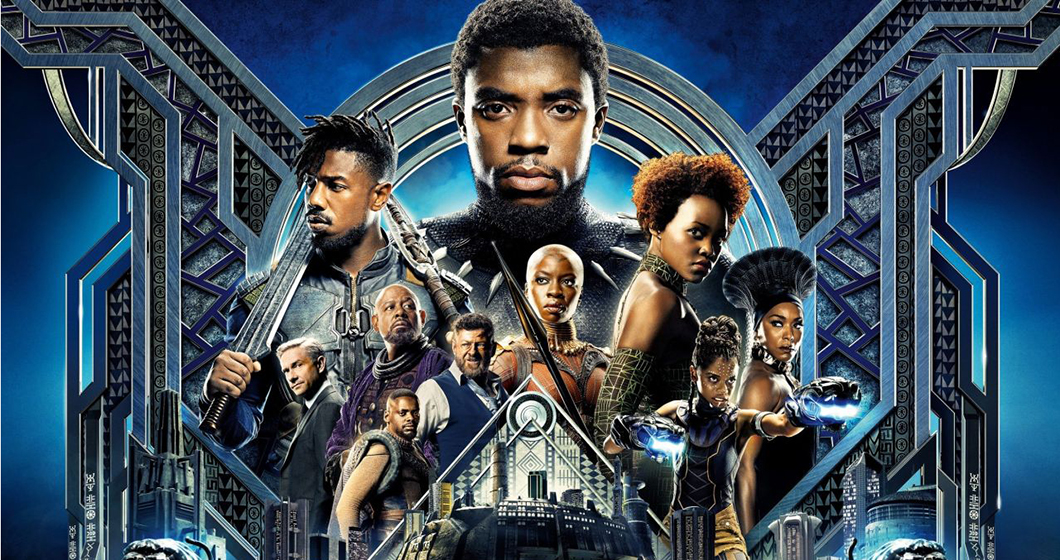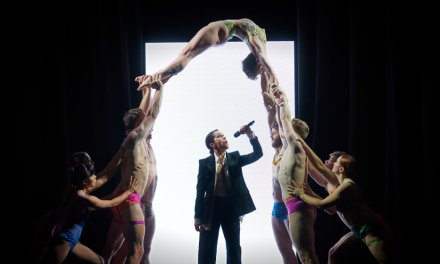Black Panther is really fun. It’s got a great cast, is a big step for representation, looks and sounds terrific, and is action packed. Just don’t think about it too hard.
It’s the latest and 18th film in Marvel’s cinematic universe, and the last one before the massive Avengers: Infinity War, releasing in May, which will be climactic, at least until the next one. Black Panther is a fine example of their well-established formula.
The film follows T’Challa (Chadwick Boseman), The Warrior King of Wakanda, a secretive and high tech Central African Nation. He’s the latest to take up the mantle of the Black Panther, the super-powered guardian of the country – after the death of his father in the previous Marvel movie Civil War. While trying to limit the proliferation of Wakanda’s super weapons around the world, he encounters Killmonger (a gigantic Michael B Jordan) a ruthless mercenary with a claim to Wakanda’s throne.
The film plays out in two halves. When the film leaves Wakanda, it’s a super-powered African James Bond movie, complete with casinos, car chases, CIA Agents and gadgets. Though the film’s version, T’Challa’s spunky younger sister, Shuri, played by the wonderful Letitia Wright, steals every scene she’s in. It’s easily the stronger half of the film, lending itself to cultural clashes and some good jokes.
The other half is a dynastic struggle in Wakanda, and it’s…weaker. Partially because Wakanda makes no sense.
It’s an isolationist techno-utopia that is, presumably, a pretty happy place – we only get a very brief view of any Wakandan location that isn’t a palace or a lab. Despite being far in advance of any other nation on Earth, they still decide who is King with a fist fight under a waterfall. Still, if you think of it as a fantasy kingdom, it’s fine. It doesn’t need to make sense any more than the succession systems of Lord of the Rings or Game of Thrones. You just roll with it and enjoy the design.
As an aside, the design is terrific. Much has already been written on the film’s costumes and architecture, it really is fantastic. I also want to draw attention to the design of the film’s UI’s and screens, along with the tech in general, which have had the same level of attention paid to them.
The film’s weakness comes when the plot tries to interact with the real world. Killmonger is an impressively empathetic villain, being an orphan who grew up in poverty in Oakland, and later became a black ops soldier and eventually mercenary. He’s seen some stuff, and it radiates through Jordan’s reliably good performance. He wants to distribute weapons to oppressed black people throughout the world, ending Wakanda’s isolationism in a very direct way. And this is where the film nearly, but not quite, falls apart.
As I said, Wakanda makes no sense. That’s fine, it’s not a real place. The problem is that America is a real place, as is Oakland, and the experience and oppression of the black diaspora is a very real phenomenon. Trying to have a place that doesn’t exist and has no historical precedent to tie itself to, interacts with some very real world problems and produces some really weird scenes.
They’ve had spies in every country for a long time. They’ve known about things like the Belgian Congo and the Trans-Atlantic Slave Trade, and yet they’ve remained isolationist. The film doesn’t invite you to think about it too hard, but it also gives you enough tid-bits to wonder. The prologue, which is framed as a children’s story, comes across as an exposition, specifically evokes the slave trade, for instance.
Then you’ve got the optics of the villain. It’s a member of the black diaspora, descended from African royalty, but cast adrift in the U.S., who wants to help the same oppressed group he comes from. He’s given enough rough edges and his plan is poorly thought out so he’s never fully sympathetic. Even so, the film is about a character called Black Panther, working with a heroic CIA agent to stop oppressed black people from getting weapons. Somebody at some point should have realised how very strange that sequence of words sounds. This is not getting into the issue of, in this film universe, black oppression being partially the fault of an African nation with-holding help, help it could easily give.
This is not a unique problem. Almost every Marvel film thus far has touched on real world issues, but not really examined them, leaving us with some strange messages. It’s unfair to expect a blockbuster action movie to really examine these issues, but it also invites this criticism through having story elements that closely parallel genuine issues.
I am overthinking it after warning you not to. At its core, it’s a Marvel movie. It looks good but features few bold shot choices. It’s entertaining and moves along. Nothing is ever unclear and there are no wasted scenes. It has Marvel’s traditional flaws too, like the civilians that never get in the way of debris and the over-complicated climax that bends itself in knots to make sure every character has something to do and cuts between several small fight scenes.
It’s just a pity since director Ryan Coogler also made Creed, an entry in a long running series that felt like its own thing, while here his directorial signature is limited to a couple of long takes in fight scenes and not being afraid of earnestness and sincerity. Having said all this, it’s a solid film.
6/10
Reviewed at Palace Electric






